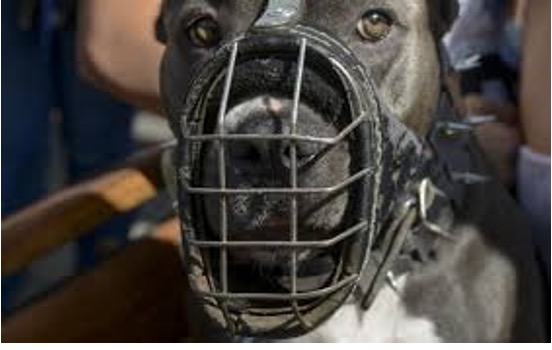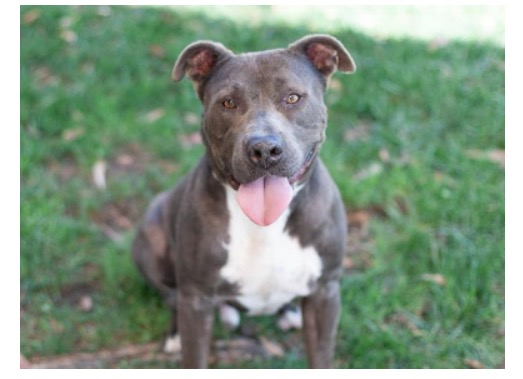Comments
ANIMAL WATCH - LA Animal Services adoptable-dog search this week showed 21 of the 24 on the first page were Pit Bulls, many of which had been there for months or even years. The second page showed 19 out of the 24 dogs were Pit Bulls with similar lengths of impoundment.
Also, this week a media release entitled, “L.A. Animal Shelters Running Out of Shelter Space,” announced that, “Los Angeles Animal Services’ six shelters have more than 1,400 dogs, 1,300 cats and 400 pocket pets including rabbits, hamsters and Guinea pigs. As the shelters near capacity, the city needs the community’s help to find new homes for the pets.”
“To encourage adoptions of dogs and cats and to kick off October as Adopt A Shelter Dog Month, L.A. Animal Services will offer reduced adoption fees."
But, there is often a bigger story behind a situation so dangerous or unresolved that it eliminates a responsible investment. Animal shelters have a moral and financial responsibility to safeguard humans and animals. If they do not, lives are irreparably damaged and millions of dollars in lawsuits are paid from our taxes.
Here’s the story of one of the Pit Bulls that is being again offered under the L.A. City “No Kill” plan for this discounted rate.
A PIT BULL GETS A HOME
My neighbor—a young professional man—adopted an 86-pound Pit Bull, named Terry, from L.A. Animal Services in June 2022, after succumbing to the repeated sad media stories of the animal shelters being overcrowded and the guilt of not “saving a life,” at a discounted price. [The name of the dog has been changed to protect its identity from those who want a dog that will attack or fight.]
Three months later, on September 22, he was walking by my gate with the heavily muzzled dog and asked if I would like to adopt him. Since I had seen Terry’s relentless aggression toward my dogs on his daily multiple walks past my property, I responded, “He would kill my dogs in five minutes.”
He agreed.

He said he was advised at the shelter that Terry—a large, very muscular, Pit Bull in his prime--would have no problem living in his small apartment in one of the new high-rise buildings near downtown, as long as he was the only dog and was taken out for exercise, and that Terry could be given access to his enclosed balcony between walks.
What they didn’t explain is that Terry is consumed with aggression at the sight of another dog, although they knew this from shelter behavioral notes and reactions.
In order to eliminate any possibility of Terry breaking loose, this responsible first-time adopter bought a specially fitted extra-strong leather harness.
He then began an experience which will definitely make him cautious of owning another Pit Bull—and it is doubtful he will ever “adopt” again.
He quickly discovered that the door to his balcony could not be left open when he is home or gone because Terry “goes crazy” at the sight of anyone walking a dog.
His building-management requires that any dogs entering or exiting the building must do so by using the stairwell and not taken in the elevator where they could engage in any threat to other residents or their pets.
But the stairs often assured Terry coming in contact visibly and/or physically with other dogs—which sent him into a fury of barking and lunging toward both the animal and owner.
When Terry passed a yard where dogs are confined behind fencing, it sent him into a rage of incessant aggressive barking and attempts to reach them.
Being a responsible pet owner, my neighbor soon had Terry fitted with a heavy-duty steel muzzle encased in leather for his comfort, but still lived in fear he would find a way to pull it loose.
And, even though he had not demonstrated human aggression—there is always a human at the other end of the leash of a dog being walked who could be dragged down or the possibility the leash would break from the tremendous strength of this Pit Bull.
TERRY RETURNS TO THE SHELTER
I begged him not to just give Terry to anyone who volunteered to take him, because he might end up in a dog fighting pit because of his natural tendencies. (And, yes, dog fighting is flourishing in Los Angeles County and there have been cases of shelter dogs meeting this fate.)
We discussed his serious liability and alternatives. He did the responsible thing and returned Terry to the shelter, advising them that he is “animal aggressive.”
We have not spoken since then, because he no longer walks past my gate, and I’m sure he feels he failed as a dog owner and will warn others about his experience.
THIS PIT BULL’S HISTORY
Terry has had at least three owners in his four-year life, according to (incomplete) shelter notes obtained through a CA Public Records Act request.
He was first brought into the LAAS shelter in May 2022. His original owner was still listed on his microchip and was called by the shelter but claimed she had “rehomed him.”
A man who appeared to staff to possibly be his most-recent owner surrendered him to the shelter.
Even if not given as the reason for surrender, the shelter knew how animal aggressive Terry is because they saw his violent reactions to other dogs and they had to keep him alone.
Then in September 2022, Terry was again surrendered by my neighbor who adopted him from the shelter, with the reason given “ANIMAL AGG.”
SHELTER NOTES ON TERRY’S BEHAVIOR
Shelter notes in September 2022 state:
“Per owner, dog is very dog reactive. Does not like other dogs when he is on walks and on leash.”
Volunteer notes indicate “Energy towards other animals,” which means aggression and should not be couched in phrases that can mislead adopters and increase City liability for later attacks.”
Failure to do so can cause an innocent pet—and potentially an adopter who later tries to stop an attack—to be hurt or killed.
IMAGINE IF TERRY MOVED NEXT DOOR TO YOU
Los Angeles Animal Services and all other shelters and rescuers have an obligation for public safety as well as getting dogs (and other animals) out the door. Terry is a danger to the community and this young owner realized that he could be facing liability that he would be paying for the rest of his life.
THE FAILURE OF “NO Kill”
Terry is the perfect example of the imperfect “No Kill” program that wants us to believe miracles can occur just by adoption.
Why is the City of Los Angeles still pushing a “No Kill” agenda when the results are obvious? Best Friends admitted earlier this year that “No Kill” has failed and animals are suffering in overcrowded cages, kennels and equipment staged in hallways.
This is a guarantee of the spread of giardia and potentially even more serious communicable diseases, as well as deliberate cruelty to the animals.
Shelters need to disclose that money is being donated by large non-profit and for-profit organizations who tout “No Kill” as an impetus to lure in new adopters and then gain access to information that can be shared for targeted advertising by the multi-billion-dollar pet food and care industry?
The dogs—and humans—are the victims, and the taxpayers pay the final costs.
(See: “No Kill” Has Failed: Best Friends Leaves L.A. City Animal Shelter, Annenberg Steps Iniled. 'Best Friends' Leaves LA City Animal ...
(Phyllis M. Daugherty is a former Los Angeles City employee, an animal activist and a contributor to CityWatch.)











